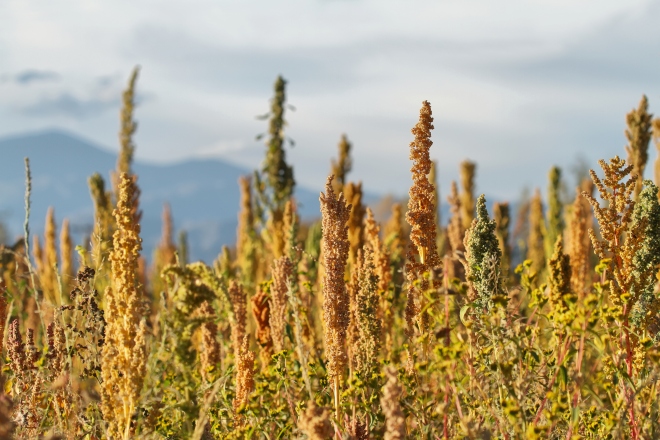 Strawberries are a favorite fruit for many. They are relatively easy to grow, and most strawberry plants produce an abundance of fruit each year.
Strawberries are a favorite fruit for many. They are relatively easy to grow, and most strawberry plants produce an abundance of fruit each year.
The Life Cycle of a Strawberry Plant
Strawberries start growing between February and June, depending on the region. A lot of strawberries produce runners that have baby plants at the tips. The runners root themselves nearby and stay attached to the central plant. Strawberries then usually take a break from producing during the second half of the summer. Keep your parent plant weeded and lightly watered, and it will grow again in the fall. In September, the plants develop latent buds that grow into flowers the next spring.
How to Care for Your Strawberry Plant
Your strawberry plant should have at least eight hours of direct sun every day. If your area has naturally alkaline soil, grow your strawberries in half-barrels or in another type of large container filled with potting soil. You can also sulk your strawberries in heavy clay.
Space your strawberries 18 inches apart, since they eagerly produce offspring. Some strawberries, like Loran, don’t produce many runners, if any at all, and they can be spaced 6 inches apart instead. Make sure the roots are well covered by soil, and that the central growing bud, otherwise called the crown, is exposed to fresh air and light. Water your strawberries well, and use mulch to keep the plants clean and the soil moist. Your plants will most likely start blooming in early spring, and once bees and other pollinating insects visit the flowers, they will start to set fruit. If you live in a warm, sunny climate, your berries will ripen about 30 days after the blossoms are fertilized.
Troubleshooting
Certain pests, diseases and climate conditions can keep your strawberry plant from thriving.
- Slugs—If you notice slugs as your fruit ripens, use plastic mulch instead of straw mulch.
- Fungal diseases—In the summer, you may notice dark spots on your leaves, which is an indication of a fungal disease. Clip or mow your strawberry foliage and rake it away in the summer. This disrupts the life cycle of some strawberry diseases, as well as pests.
- Birds—Keep robins, brown thrashers, and other pests from stealing your berries by covering the plants with a lightweight bird netting as the berries begin to ripen.
- Heat and drought—If you have a particularly dry year, the fruit should return to normal size once the weather improves. Also make sure to water your plant well.
Harvesting and Storing
Pick your strawberries in the morning, when the fruit is still cool, and put it in the refrigerator right away. Rinse the berries right before you cook or eat them. If you have extra strawberries, you can freeze them, dry them or make them into jam or preserves.
Please LIKE and FOLLOW for future posts and blogs on Gardening.

 Just because you don’t have a garden doesn’t mean you can’t enjoy having your own plants. These plants liven up any room and are easy to care for. Some even help clean up your indoor air.
Just because you don’t have a garden doesn’t mean you can’t enjoy having your own plants. These plants liven up any room and are easy to care for. Some even help clean up your indoor air. You don’t have to be born with a “green thumb” to grow lush, spectacular roses on healthy, thriving rose bushes.
You don’t have to be born with a “green thumb” to grow lush, spectacular roses on healthy, thriving rose bushes. Transplanting a cactus is a bit different from transplanting any other type of plant, due mostly to its awkward shape and prickly surface. The following steps can help make the transition go smoothly.
Transplanting a cactus is a bit different from transplanting any other type of plant, due mostly to its awkward shape and prickly surface. The following steps can help make the transition go smoothly. Many gardeners turn to pesticides in order to rid their gardens of harmful pests. However, most times such damaging and sometimes toxic measures aren’t necessary. Prevention, traps and barriers, and homemade remedies can often be all the control you need for your garden.
Many gardeners turn to pesticides in order to rid their gardens of harmful pests. However, most times such damaging and sometimes toxic measures aren’t necessary. Prevention, traps and barriers, and homemade remedies can often be all the control you need for your garden.

 Garlic will grow in a small backyard garden or even tiny pots lined on your kitchen window. Garlic cloves are planted into the soil to a depth of 2 inches and 4 inches from each other. The spice clove thrives better in soil temperatures of around 50 degrees, as this curbs premature growth. The best time for planting is around fall for healthier yields; spring time is ideal too though the cloves will sprout into small head garlic, but which are resistant to winter’s cold.
Garlic will grow in a small backyard garden or even tiny pots lined on your kitchen window. Garlic cloves are planted into the soil to a depth of 2 inches and 4 inches from each other. The spice clove thrives better in soil temperatures of around 50 degrees, as this curbs premature growth. The best time for planting is around fall for healthier yields; spring time is ideal too though the cloves will sprout into small head garlic, but which are resistant to winter’s cold. Quinoa is a grain like crop that’s grown for its edible seeds. Its leaves can also serve as vegetables, albeit on a limited scale. The plant thrives in well-drained soils and needs a considerably long maturing season. It also requires warm temperatures not exceeding 90°F (32°C.
Quinoa is a grain like crop that’s grown for its edible seeds. Its leaves can also serve as vegetables, albeit on a limited scale. The plant thrives in well-drained soils and needs a considerably long maturing season. It also requires warm temperatures not exceeding 90°F (32°C. How to Grow Spaghetti Squash
How to Grow Spaghetti Squash